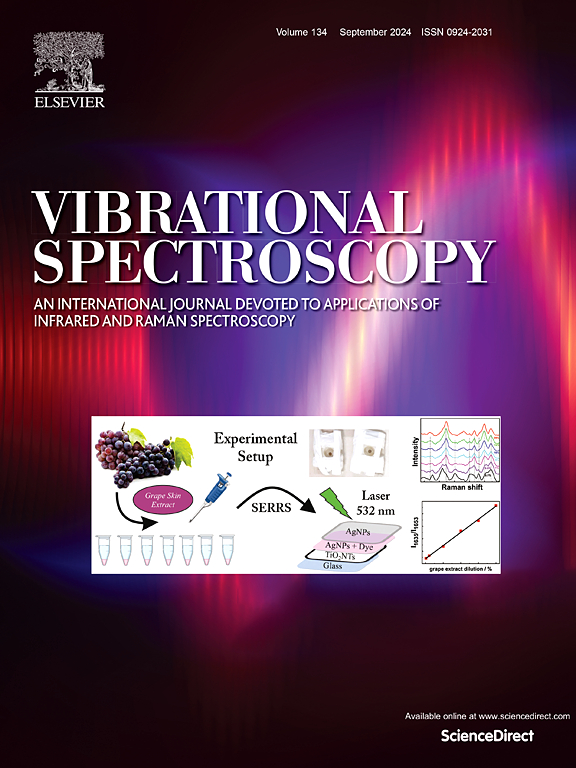建立一种快速傅立叶变换红外光谱系统,用于天麻的精确、可靠的品级鉴别
IF 3.1
3区 化学
Q2 CHEMISTRY, ANALYTICAL
引用次数: 0
摘要
天麻属于珍稀药材,在中国属于国家二类保护植物。本研究采用傅里叶变换红外光谱(FTIR)技术结合机器学习算法,以云南昭通不同品级的春冬天麻为主要研究对象,建立了天麻智能分级检测模型。通过11种不同的预处理方法,对原始光谱(OS)和预处理光谱(PS)进行了初步探索,利用主成分分析(PCA)在4000 ~ 400 cm-¹的光谱范围内进行了分析。值得注意的是,天麻不同等级的FTIR表现出明显的聚类模式,预处理后的光谱数据比原始光谱数据具有更好的聚类效果。为了确定最佳检测模型,我们利用朴素贝叶斯(NB)、支持向量机(SVM)、树(T)、逻辑回归(LR)和多层感知器(MLP)等多种机器学习算法,利用原始光谱数据和经过有效预处理的数据,建立了天麻综合等级检测模型。经过比较,MLP模型显示出卓越的整体分类性能,成为更好的选择。值得注意的是,无论光谱数据采用何种预处理方法,MLP模型在测试集上的准确率都达到了100 %。在此基础上,笔者设计了一套智能检测系统,即“基于MLP模型和FTIR技术的天麻品位智能检测系统”。本研究强调了使用FTIR技术的机器学习分类模型在准确检测和区分天麻等级方面的潜力。本文章由计算机程序翻译,如有差异,请以英文原文为准。
Developing a fast Fourier transform infrared spectroscopy system for precise and reliable grade differentiation of Gastrodia elata
Gastrodia elata belongs to the rare medicinal herbs, in China classified as a plant under state protection (Category II). This research utilizes Fourier Transform Infrared Spectroscopy (FTIR) combined with machine learning algorithms to develop an intelligent grading detection model for Gastrodia elata, with different grades of spring and winter Gastrodia elata harvested in Zhaotong, Yunnan as the main research objects. An initial exploration of both the original spectra (OS) and the preprocessed spectra (PS), which were processed through eleven distinct pretreatment methodologies, was conducted using Principal Component Analysis (PCA) within the spectral range spanning 4000 to 400 cm-¹. Remarkably, the FTIR of the diverse grades of Gastrodia elata exhibited a discernible clustering pattern, with the preprocessed spectral data exhibiting a superior clustering effect compared to the original spectral data. To ascertain the optimal detection model, we employed a diverse array of machine learning algorithms, including Naive Bayes (NB), Support Vector Machine (SVM), Tree (T), Logistic Regression (LR), and Multi-layer Perceptron (MLP), to establish a comprehensive grade detection model for Gastrodia elata, leveraging both the original spectral data and those subjected to effective preprocessing. Upon comparison, the MLP model emerged as the superior choice, demonstrating exceptional overall classification performance. Notably, the MLP model achieved 100 % accuracy on the test set, irrespective of the preprocessing method applied to the spectral data. Drawing upon these findings, the authors designed an intelligent detection system, namely "Intelligent Detection System for the Grade of Gastrodia elata Based on MLP Model and FTIR Technology". This research highlights the potential of machine learning classification models using FTIR technology to accurately detect and distinguish Gastrodia elata grades.
求助全文
通过发布文献求助,成功后即可免费获取论文全文。
去求助
来源期刊

Vibrational Spectroscopy
化学-分析化学
CiteScore
4.70
自引率
4.00%
发文量
103
审稿时长
52 days
期刊介绍:
Vibrational Spectroscopy provides a vehicle for the publication of original research that focuses on vibrational spectroscopy. This covers infrared, near-infrared and Raman spectroscopies and publishes papers dealing with developments in applications, theory, techniques and instrumentation.
The topics covered by the journal include:
Sampling techniques,
Vibrational spectroscopy coupled with separation techniques,
Instrumentation (Fourier transform, conventional and laser based),
Data manipulation,
Spectra-structure correlation and group frequencies.
The application areas covered include:
Analytical chemistry,
Bio-organic and bio-inorganic chemistry,
Organic chemistry,
Inorganic chemistry,
Catalysis,
Environmental science,
Industrial chemistry,
Materials science,
Physical chemistry,
Polymer science,
Process control,
Specialized problem solving.
 求助内容:
求助内容: 应助结果提醒方式:
应助结果提醒方式:


